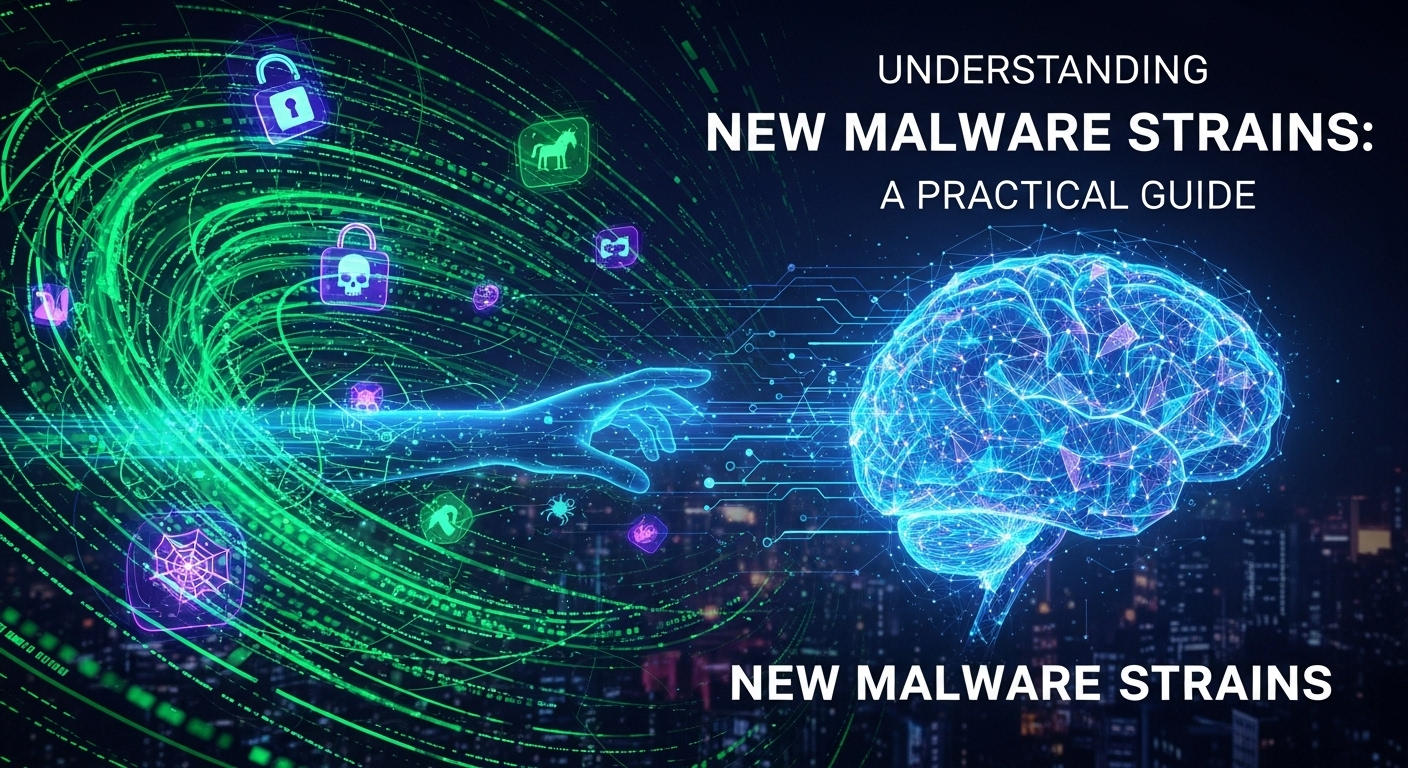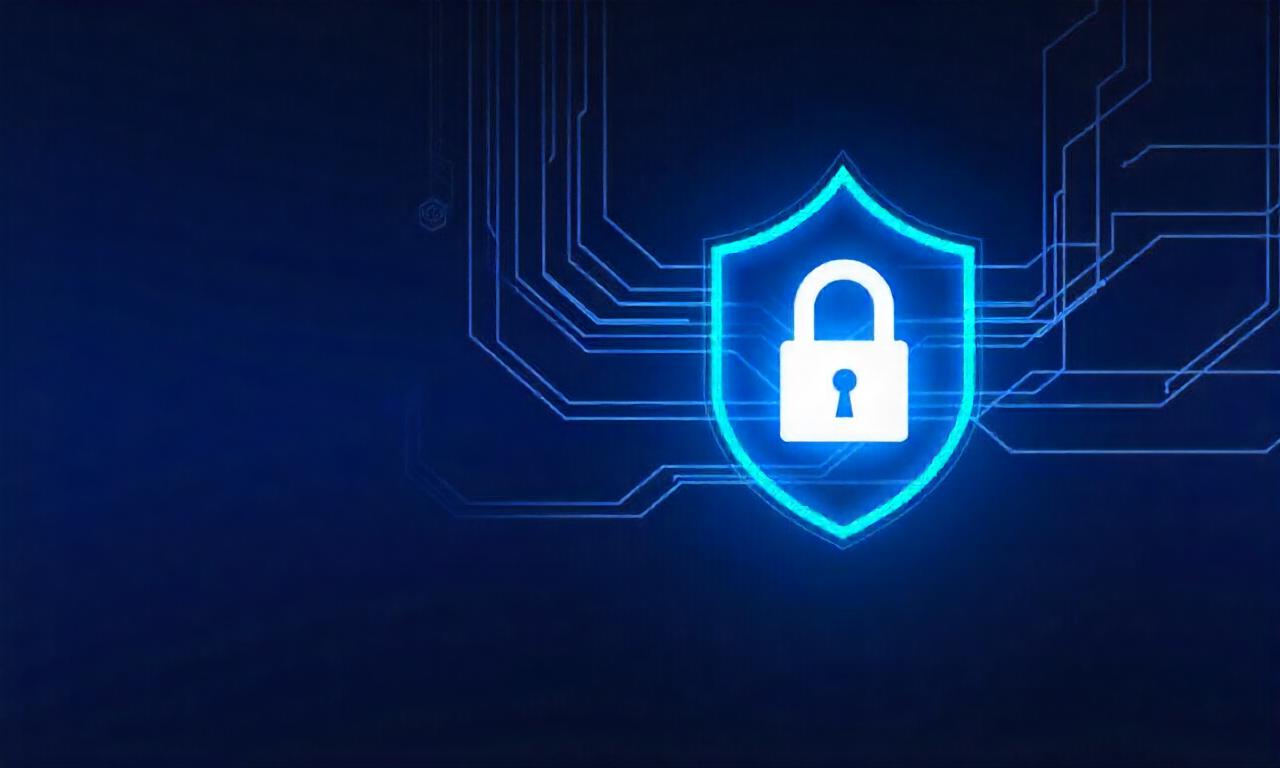Understanding New Malware Strains: A Practical Guide
Malware evolves faster than most defenses—and the gap is widening. If your organization handles sensitive data or runs internet-facing systems, understanding new malware strains is no longer optional; it’s central to resilience. This practical guide breaks down how novel malware families are born, how they evade detection, and what you can do—today—to reduce risk. Beyond buzzwords, we’ll focus on repeatable playbooks that scale, clear metrics, and defenses that work across diverse environments.
H2: The Evolving Malware Landscape
The malware landscape is dynamic, global, and commercially motivated. Attackers iterate like startups: they test, pivot, and ruthlessly optimize. What worked yesterday rarely works tomorrow, and the sheer volume of variants forces defenders to adopt a more adaptive, intelligence-driven approach rather than static signatures.
Meanwhile, the barriers to entry have plummeted. Malware-as-a-Service (MaaS) platforms, affiliate programs, and turnkey kits empower less skilled actors to deploy disruptive campaigns. This industrialization means defenders face not only sophisticated nation-state operations, but also well-funded cybercrime ecosystems that recycle proven techniques.
To keep pace, teams need a layered, behavior-first strategy that emphasizes visibility, rapid containment, and continuous learning. It’s not about chasing every headline; it’s about building durable capabilities that degrade attacker ROI.
H3: 1. What Defines a “New” Malware Strain?
A “new” strain is more than a recompiled binary. In practice, it’s a variant that meaningfully changes behavior: delivery vectors, persistence mechanisms, command-and-control (C2) protocols, capabilities (e.g., data theft or lateral movement), or evasion techniques. These shifts can break existing detections and create windows of opportunity for attackers.
Sometimes, novelty is modular. Threat actors swap components—packer, loader, C2 channel—while preserving core logic. This mix-and-match approach yields families that look “new” in telemetry yet share lineage. Recognizing these relationships helps analysts map campaigns, anticipate next moves, and avoid chasing cosmetic differences.
Critically, “new” is contextual. A technique may be novel to your environment if your controls never faced it. This is why environment-specific baselines and threat modeling are as important as global threat feeds.
H3: 2. Trends Shaping Malware Innovation
- Living-off-the-land (LotL): Attackers increasingly abuse built-in tools (PowerShell, WMI, certutil) to blend with normal operations. This reduces artifacts and complicates attribution.
- BYO-Vuln: “Bring Your Own Vulnerability” playbooks pair off-the-shelf exploits with custom loaders, letting actors reuse known weaknesses at scale.
- Cloud-native targeting: Malware now seeks access tokens, service principals, and API keys to pivot into SaaS and IaaS, extending impact beyond endpoints.
These trends favor stealth and persistence over smash-and-grab. Expect continued growth in identity-focused attacks, token theft, and abuse of legitimate remote management tools. Defenses must prioritize behavior analytics and identity protections to counter this trajectory.
H3: 3. Why Traditional Defenses Struggle
Signature-based antivirus catches what it recognizes; modern malware is engineered to be unrecognizable. Encryption, polymorphism, and packers can alter binaries on each deployment. Even advanced static analysis can be blinded by obfuscation and staged payloads.
Network-centric defenses also face headwinds. Encrypted traffic, domain fronting, and legitimate cloud channels (CDNs, collaboration apps) mask C2. Blocking everything is impractical; discerning good from bad within “allowed” channels is the challenge.
Finally, tool sprawl and visibility gaps delay detection. If identity logs live in one silo, endpoint telemetry in another, and cloud logs in a third, correlations come too late. Consolidated, high-fidelity telemetry and automated enrichment are now table stakes.
H2: How New Malware Works: Anatomy Without the Jargon
Understanding the lifecycle helps you design controls that break it. New strains typically follow a familiar arc: initial access, execution and evasion, persistence, command-and-control, and action on objectives. Each stage offers unique defensive choke points.
Importantly, attackers innovate at the seams—between email and endpoint, between endpoint and identity, between on-prem and cloud. Your defenses should do the same: monitor transitions, validate trust assumptions, and instrument handoffs.
Treat malware analysis as a feedback loop. Insights from incidents should inform detections, hardening, and user education. Over time, your environment becomes less hospitable to novel threats.
H3: 1. Initial Access and Delivery
Common entry routes include phishing with malicious attachments or links, drive-by downloads, weaponized software updates, and abuse of misconfigured services. In supply chain scenarios, attackers insert implants into legitimate installers, shifting risk upstream and bypassing frontline controls.
Modern campaigns increasingly target identity edges: harvesting credentials, replaying tokens, or exploiting OAuth consent flows. Once an identity foothold is established, malware deployment can appear as “legitimate” administration.
Defensively, prioritize secure email gateways with URL rewriting, attachment detonation in sandboxes, and strong MFA tied to device posture. Train users to verify prompts and consent screens, particularly for third-party app integrations.
H3: 2. Execution, Evasion, and Persistence
Once inside, malware typically runs a lightweight loader to stage the real payload. It may use LotL commands, signed binaries, or reflective techniques to avoid disk writes and hash-based detection. Evasion includes environment checks, anti-debugging, and delaying execution to outlast sandbox timeouts.
Persistence mechanisms vary: scheduled tasks, registry run keys, launch agents, credential caching, or abusing legitimate services. In cloud environments, persistence may be achieved via rogue service principals, access policies, or long-lived tokens.
Your countermeasures should emphasize application control, script-blocking with logging, and EDR with behavior-based detection. Invest in kernel or sensor-level visibility for process injection patterns and unusual parent-child process trees.
H3: 3. Command-and-Control and Objectives
C2 channels often piggyback on TLS, cloud APIs, or popular collaboration platforms. Domain generation algorithms (DGAs) and fast-flux hosting complicate blocking. Some strains now adopt “fileless” C2 via legitimate inbox rules or cloud storage polling.
Objectives typically include data theft, lateral movement, ransomware deployment, or degradation of services. Identity access remains a prime prize: once an attacker holds admin privileges, they can deploy malware at scale with legitimate tools.
Monitoring DNS patterns, egress anomalies, and unusual API usage yields early detection opportunities. Segmented networks, least privilege, and just-in-time (JIT) access limit blast radius if C2 is established.
H2: Detection and Analysis: Building a Repeatable Playbook
Detection is a process, not a product. Your goal is to create a reliable pipeline: collect telemetry, triage quickly, enrich with context, and escalate with confidence. False positives waste time; false negatives create crises.
Focus on behavioral indicators that are harder to morph: suspicious parent-child relationships, abnormal token usage, anomalous file system access, and atypical network destinations. Blend rules with machine learning judiciously—ML is powerful but must be explainable and paired with domain expertise.
Build an analysis loop that’s safe by design. Isolate samples, avoid operational networks, and use non-attributable infrastructure. Then, translate findings into detections your SOC can maintain and measure.
H3: 1. Telemetry You Must Collect
At a minimum, ensure you have:
- Endpoint telemetry: process creation, command-line arguments, module loads, registry/file changes.
- Identity telemetry: sign-ins, MFA prompts, token issuance, consent grants, privilege escalations.
- Network telemetry: DNS queries, TLS SNI, HTTP headers, egress volumes, proxy logs.
- Cloud audit logs: API calls, configuration changes, key usage, role assignments.
Without these, you’re driving blind. High-fidelity timestamps, host identifiers, and correlation IDs make cross-source analysis feasible. Normalize logs into a consistent schema to streamline detection engineering and incident response.
Finally, retain data long enough to track dwell time. Many advanced intrusions unfold over weeks. Thirty days may not suffice; 90–180 days is a better target for high-risk environments.
H3: 2. Safe Triage and Sandboxing
When a suspicious artifact appears, triage in a segregated sandbox that mirrors production OS images and common apps but has no path to sensitive networks. Observe process trees, file writes, persistence attempts, and outbound connections.
Dynamic analysis reveals behavior missed by static scans, especially in packed or staged payloads. Combine it with reputation checks (domains, hashes), open-source intelligence (OSINT), and previous incident data to prioritize response.
Document findings in structured formats (e.g., STIX) and feed them into your detection backlog. Always assume samples may attempt VM detection; diversify sandbox fingerprints to reduce evasion.
H3: 3. Behavioral Analytics and ML Considerations
Behavioral detections excel when built around attack objectives rather than tool specifics. For example: “Office spawning script interpreters,” “non-admin process attempting credential dump,” or “sudden spikes in file encryption I/O.” These patterns persist even as malware changes clothes.
Machine learning can highlight anomalies at scale, but it’s not magic. Prioritize models that are transparent and retrainable. Track drift, validate with representative datasets, and build human-in-the-loop reviews to avoid alert fatigue.
Measure outcomes. A model’s value shows up in reduced mean time to detect (MTTD) and improved precision. If your analysts don’t trust the signals, tune or retire them.
Table: Detection Approaches vs. Coverage
| Approach | What It Catches | Strengths | Gaps/Limitations |
|---|---|---|---|
| Signature/IOC Matching | Known hashes, domains, file names | Fast, low compute cost | Evasive to polymorphism/packers |
| Behavioral Rules | Suspicious process, identity, network flows | Generalizes across variants | Requires tuning to reduce false positives |
| Sandbox Detonation | Runtime behavior of samples | Great for unknown binaries | Evasion via VM checks/time bombs |
| ML/Anomaly Detection | Outliers in telemetry | Scales across big data | Explainability and drift challenges |
| Threat Intelligence Feeds | Community-reported indicators | Context, campaign awareness | Indicator half-life is short |
H2: Prevention and Hardening: Practical Controls That Move the Needle
Prevention is about removing easy wins for attackers and reducing the blast radius when prevention fails. You don’t need perfection; you need layers that cumulatively drive attacker costs higher than your risk tolerance.
Focus on controls that are hard for adversaries to bypass at scale: device attestation, strong MFA tied to device health, application allowlisting, and secure baseline configurations. Combine these with rapid patching for high-risk exposures.
Finally, anchor prevention in governance. Without ownership, metrics, and accountability, even the best tools underperform.
H3: 1. Attack Surface Reduction
- Enforce application control/allowlisting for servers and critical workstations.
- Disable or restrict high-risk components (e.g., macro execution, legacy protocols, unnecessary services).
- Harden email: DMARC/DKIM/SPF, attachment filtering, and protected links.
Inventory is your foundation. You can’t shrink what you can’t see. Use automated discovery to track devices, software versions, and internet-exposed services. Review exposure regularly; seasonal drift is real.
Prioritize remediation by exploitability and business impact. A medium-severity bug on an internet-facing asset may outrank a high-severity bug on an isolated lab system.
H3: 2. Identity and Privilege Controls
Implement phishing-resistant MFA (e.g., FIDO2) for admins and high-risk roles. Tie access to device compliance and network context—this is the heart of Zero Trust. Rotate keys and secrets automatically; limit token lifetimes.

Minimize standing privileges. Adopt just-in-time elevation with approval workflows and session recording. Audit privileged actions and alert on anomalous consent grants or role changes, especially in cloud control planes.
Segment access between environments (prod, dev, test) and within them. Flat networks and overbroad roles are attacker gifts; don’t give them away.
H3: 3. Patch, Config, and Exposure Management
Move from ad-hoc patching to risk-based vulnerability management. Incorporate exploit telemetry, external exposure, and asset criticality. Aim for service-level objectives (SLOs) like “critical internet-facing issues fixed in 72 hours.”
Baseline configurations using benchmarks and enforce drift detection. Treat misconfiguration as a class of vulnerability; many intrusions exploit defaults and weak policies, not CVEs.
For internet-facing systems, deploy WAFs, rate limiting, and bot protection. Continuously scan attack surfaces (including your supply chain) and retire or shield legacy applications where patching lags.
H2: Incident Response for New Strains: From First Alert to Postmortem
Incidents involving novel malware require speed, clarity, and containment strategies that avoid tipping off the adversary unnecessarily. Your runbooks should adapt dynamically as you learn.
The first goal is to prevent spread and data loss without erasing forensic trails. Overreactions (like mass reimaging) can cause more damage than the malware itself. Proceed with discipline and documentation.
After containment, eradicate thoughtfully and recover securely. Then, invest in a robust postmortem that drives real, measurable improvements.
H3: 1. Contain Quickly Without Causing Damage
- Isolate affected hosts from production networks; maintain forensic integrity.
- Block malicious destinations at egress and revoke suspicious tokens or sessions.
- Freeze risky automation that could propagate malware (software deployment tools, scripts).
Communicate early with stakeholders. Provide clear status, scope, and next steps. Resist the urge to “fix fast” by deleting artifacts; you’ll lose evidence that could reveal lateral movement or data exfiltration.
If ransomware is suspected, protect backups immediately. Validate restore points are clean before initiating recovery.
H3: 2. Eradication and Recovery
Once you’ve mapped the kill chain, remove persistence, reset credentials, and reimage systems as needed with known-good, attested images. Validate that scheduled tasks, startup items, and cloud roles are clean.
Execute a staged recovery: restore the most critical services first, monitor closely, and roll forward only when telemetry shows normal baselines. Avoid reintroducing vulnerable configurations that invited the intrusion.
Update detections to catch any re-use of observed techniques. Keep heightened monitoring for at least one full business cycle to catch delayed actions.
H3: 3. Lessons Learned and Resilience
A strong postmortem answers: What happened, how, why it worked, and how we’ll stop it next time. Focus on systemic fixes, not blame. Document improvements with owners and deadlines.
Translate insights into:
- New or tuned detections
- Hardening changes and policy updates
- Tabletop exercises and training for gaps revealed
Track outcomes: reduced MTTD/MTTR, fewer privileged misuses, faster patch times. Resilience is measurable—make those numbers visible.
H2: Threat Intelligence and Collaboration
Threat intelligence turns isolated incidents into actionable foresight. But it only helps if it’s operationalized: ingested, prioritized, and mapped to controls your team actually uses.
Collaborate openly and ethically. Sharing anonymized patterns, TTPs, and mitigations helps the broader community and increases the cost for attackers reusing the same playbooks.
Measure the value of intel. Not all feeds are equal; context and timeliness matter more than volume.
H3: 1. Consuming and Operationalizing Intel
Select sources that align with your tech stack and sector. Prioritize curated TTP reports over raw IOC dumps. Standardize ingestion into your SIEM/EDR, tag by confidence and expiration, and automate deprecation of stale indicators.
Map intel to frameworks like MITRE ATT&CK. Build detections targeting behaviors, not just indicators. Use playbooks to respond automatically when high-confidence matches occur.
Close the loop by feeding your own findings—safely anonymized—into internal knowledge bases and, when appropriate, community channels.
H3: 2. Building Community Defense
Join sector ISACs/ISAOs, vendor-sharing programs, and local security meetups. Participate in incident debriefs and collaborative hunts. Sharing near-real-time observations (e.g., emerging phishing lures, new C2 domains) can stop campaigns mid-flight.
Academic and nonprofit partnerships can enhance analysis and broaden perspective. Collective defense multiplies your capacity and reduces duplicated effort across organizations facing the same threats.
H3: 3. Metrics That Matter
Track intel-driven detections: how many alerts originated from external intel vs. internal baselines? Measure time-to-block for new indicators, and the percentage of alerts enriched with context at creation.
Evaluate efficacy quarterly. Retire low-value feeds; invest more in those that consistently produce high-confidence, behavior-centric insights. Align metrics with business risk, not vanity counts.
H2: Compliance, Legal, and Ethics
Malware response intersects with regulatory obligations. Data breach notifications, retention requirements, and cross-border data considerations can shape your technical and operational decisions.
Legal counsel should be part of your incident command from the outset. They help manage privilege, coordinate with law enforcement when needed, and ensure communications are accurate and defensible.
Ethically, you must protect users and respect privacy. Security measures should be proportionate, transparent where possible, and aligned with organizational values.
H3: 1. Regulatory Considerations
Understand sector-specific mandates (e.g., HIPAA, PCI DSS) and regional laws (e.g., GDPR). Some require prompt breach notifications or specific safeguards for data in transit and at rest.
Retention and chain-of-custody rules affect how you store evidence. Plan ahead so your logging and forensic processes satisfy evidentiary standards without violating privacy commitments.
Coordinate with third parties—including cloud providers and critical vendors—on joint response obligations. Contracts should clarify data handling, breach reporting, and support expectations.
H3: 2. Responsible Disclosure and Ethics
If you uncover supply chain risks or widespread vulnerabilities, follow responsible disclosure practices. Engage vendors privately, provide actionable detail, and agree on timelines that balance user safety and transparency.
Avoid publishing operational details that would enable copycat attacks. Share high-level TTPs and mitigations instead. Do no harm is a practical guideline: inform defenders without arming adversaries.
Integrate ethics into security governance: clear policies for data access, monitoring, and retention. Security is strongest when it earns stakeholder trust.
FAQ: Understanding New Malware Strains
Q: What is the fastest way to tell if a malware strain is “new” to our environment?
A: Look for behaviors your baseline rarely shows: unusual parent-child processes (e.g., Office spawning a script interpreter), sudden spikes in outbound DNS to unclassified domains, or unexpected token/role usage. If it evades existing signatures and triggers multiple behavioral anomalies, treat it as novel.
Q: How do we prioritize response when detection isn’t definitive?
A: Use a risk triage: critical asset involved, presence of persistence attempts, outbound data patterns, and identity misuse. When in doubt, isolate first, then investigate. Containment buys time.
Q: Are AI-driven detections enough to catch new strains?
A: No single method suffices. Combine ML with rule-based behavior detections, sandboxing, and high-quality intel. Prioritize explainability so analysts can trust and tune results.
Q: What controls offer the best “bang for buck” against new malware?
A: Phishing-resistant MFA, application allowlisting for critical systems, robust EDR with behavior analytics, strong email/web filtering, and risk-based patching. These controls consistently reduce successful intrusions.
Q: How long should we keep logs to investigate novel malware?
A: Aim for 90–180 days for high-risk organizations. New strains may dwell quietly before detonating, and shorter retention can erase crucial evidence.
Q: Does Zero Trust stop malware?
A: Zero Trust doesn’t eliminate malware, but it contains it by requiring continuous verification for access and minimizing standing privileges. It reduces lateral movement and limits blast radius.
Key Takeaways Checklist
- Collect and normalize endpoint, identity, network, and cloud telemetry.
- Emphasize behavioral detections and explainable ML.
- Harden identity with phishing-resistant MFA and JIT privileges.
- Reduce attack surface via allowlisting and secure baselines.
- Practice safe sandboxing; integrate findings into detections.
- Run disciplined incident response with staged recovery.
- Operationalize threat intelligence; measure its impact.
- Align with legal and ethical best practices.
Conclusion
New malware strains thrive on defender inertia and fragmented visibility. The antidote is a layered, behavior-first strategy grounded in high-fidelity telemetry, disciplined incident response, and continuous improvement. By hardening identities, shrinking attack surfaces, and operationalizing threat intelligence, you make your environment measurably less attractive and resilient to inevitable surprises. The goal isn’t perfection—it’s to shift the economics so that attacks fail fast, spread less, and teach you how to become stronger. With the right playbooks, tools, and culture, understanding new malware strains becomes a competitive advantage, not an existential threat.
—
Summary
This guide explains how and why new malware strains emerge, how they evade traditional defenses, and what practical steps organizations can take to detect, prevent, and respond. It emphasizes behavior-based detection, consolidated telemetry, phishing-resistant MFA, application allowlisting, safe sandboxing, and disciplined incident response. A comparison table outlines detection approaches and their limits. The article also covers threat intelligence operationalization, community collaboration, and legal/ethical considerations. The core message: build layered, adaptive defenses that increase attacker costs and reduce impact.
















